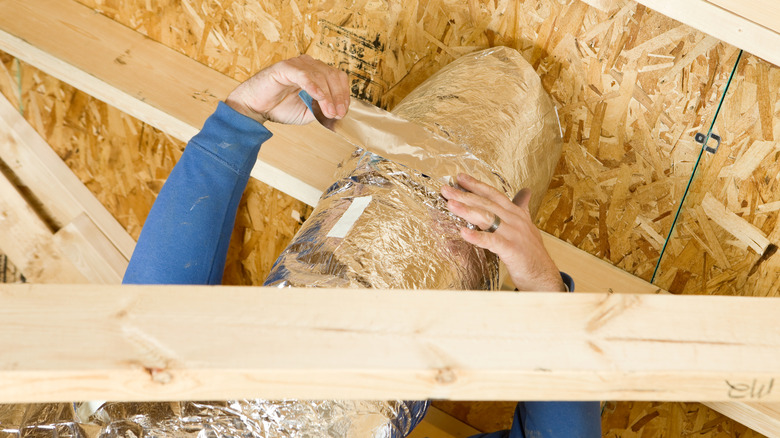Why Chilly Winter Temperatures Could Mean Dripping Air Vents (And What To Do About It)
Dripping air vents are common during winter. When this happens, your first thought may be a leaky roof or some other catastrophic structural problem. While these are possibilities, the issue often lies in something less dramatic but just as concerning: condensation. In the winter months, the air inside your home is usually much warmer than the air outside, thanks to your heating system. However, condensation forms due to this temperature difference when this warm air travels through your ductwork and reaches a cold surface. This is the same way your hot drink "sweats" when left in a cooler environment.
Your air ducts are generally not exposed to the warm indoor air but are instead subject to the colder temperatures between your walls or in the attic. As the warm, moisture-laden air flows through these colder ducts, the moisture in the air condenses into water droplets that accumulate and eventually cause your vents to drip. The phenomenon may become particularly pronounced if the temperature difference between the warm air inside and the cold surface of the duct is substantial, as is often the case during the peak of winter. Although a dripping vent can be annoying, addressing this issue promptly and effectively is vital. The consequences of this can go beyond mere discomfort. Over time, the accumulation of condensation can lead to issues like mold growth and even structural damage. The good news is that there are various ways to fix it.
Missing or poor insulation
The most likely cause of condensation in your air ducts is either missing insulation or poorly installed insulation. Rectifying the problem is generally straightforward but crucial. You can install new insulation around your ductwork. This is especially advisable if you've never had insulation in the first place or if the existing material is severely deteriorated. It also helps to replace any faulty installations that you already have. They may have been installed poorly or may be outdated. In either case, removal and replacement are key to solving the condensation issue.
When choosing insulating materials, be sure to take into account the R-value, which helps determine thermal resistance. The effectiveness of the insulation in limiting heat transmission and, subsequently, condensation formation will increase with the R-value. Usually, insulation with a high R-value is made from higher-quality materials and offers better performance. It might cost a bit more upfront, but the long-term benefits of avoiding water damage or mold growth in your home can save you money and headaches down the line. Lastly, don't just focus on the ducts themselves. While at it, seal any gaps with aluminum foil to prevent air from passing through. In essence, this comprehensive approach ensures that you're not just putting a band-aid on the problem but actually resolving it at its root.
Stuck damper and fan venting into the attic
Another possible reason for condensation in your air ducts is that your outside damper is stuck. Dampers are pivotal components that control airflow and help regulate the temperature within the ducts. Fixing a stuck damper is often straightforward but crucial. You might be able to solve the problem by moving it with your finger. If it's broken or beyond repair, it might be best to replace it entirely.
Then there's the issue of your fan venting into the attic. While venting into the attic may have seemed like a convenient or harmless shortcut during installation, it's a decision that can come back to haunt you. When warm, humid air from your home is expelled into a cold attic, you create an environment for condensation to thrive, contributing to poor air quality and potential mold growth in your attic. The remedy is relatively simple: Extend the ductwork to vent this air directly outside. By doing so, you not only alleviate the condensation problem but also improve the air quality within your home.
Lastly, don't overlook the possibility that leaking or damaged toilets or drain pipes can also be a culprit. Water from these sources can drip down, accumulating moisture in the vents below them. This introduces yet another source of water that can contribute to a more humid environment, paving the way for increased condensation. Therefore, inspecting and repairing any leaks in your plumbing fixtures is essential to comprehensively tackle the condensation issue in your home.


